
Altstadt: The Heart of Zurich's Timeless Charm
Discover Altstadt, Zurich's historical gem, where medieval charm meets modern vibrancy, offering a rich tapestry of culture, art, and culinary delights.
Altstadt, or Old Town, is the historical heart of Zurich, Switzerland. Nestled along the Limmat River, this enchanting neighborhood offers a journey through time with its cobblestone streets, medieval architecture, and centuries-old churches. As you wander through its narrow alleys, you'll discover hidden courtyards, charming boutiques, and lively cafes that capture the essence of Zurich's rich cultural heritage. Visit iconic landmarks such as the Grossmünster and Fraumünster churches, both boasting impressive stained glass windows and awe-inspiring Gothic and Romanesque architecture. The Grossmünster, with its twin towers, offers a panoramic view of the city from its tower, while the Fraumünster is renowned for its Chagall windows. Don't miss the opportunity to explore the Swiss National Museum for a deeper understanding of the country's history and traditions. For art enthusiasts, the Kunsthaus Zurich houses an extensive collection of modern and contemporary art. After a day of sightseeing, unwind by the riverbanks or indulge in Swiss culinary delights at one of Altstadt's many traditional restaurants. As the sun sets, the neighborhood transforms into a vibrant nightlife scene, with numerous bars and clubs offering entertainment until the early hours.
Local tips in Altstadt
- Wear comfortable shoes as the cobblestone streets can be uneven.
- Visit early in the morning or late in the afternoon to avoid crowds at popular landmarks.
- Bring a camera to capture the stunning architecture and picturesque views.
- Try the local Swiss chocolate and cheese from specialty shops.
- Check for any local festivals or events that might be happening during your visit.
Altstadt: The Heart of Zurich's Timeless Charm
Altstadt, or Old Town, is the historical heart of Zurich, Switzerland. Nestled along the Limmat River, this enchanting neighborhood offers a journey through time with its cobblestone streets, medieval architecture, and centuries-old churches. As you wander through its narrow alleys, you'll discover hidden courtyards, charming boutiques, and lively cafes that capture the essence of Zurich's rich cultural heritage. Visit iconic landmarks such as the Grossmünster and Fraumünster churches, both boasting impressive stained glass windows and awe-inspiring Gothic and Romanesque architecture. The Grossmünster, with its twin towers, offers a panoramic view of the city from its tower, while the Fraumünster is renowned for its Chagall windows. Don't miss the opportunity to explore the Swiss National Museum for a deeper understanding of the country's history and traditions. For art enthusiasts, the Kunsthaus Zurich houses an extensive collection of modern and contemporary art. After a day of sightseeing, unwind by the riverbanks or indulge in Swiss culinary delights at one of Altstadt's many traditional restaurants. As the sun sets, the neighborhood transforms into a vibrant nightlife scene, with numerous bars and clubs offering entertainment until the early hours.
Iconic landmarks you can’t miss
Lindenhof
Discover Zurich’s historical gem, Lindenhof, where nature, culture, and stunning views converge in a serene urban park.

Geiserbrunnen
Experience the charm of Geiserbrunnen, a captivating historical landmark in Zurich offering a glimpse into the city's rich culture and artistry.

Flower Clock
Discover the stunning Flower Clock in Zürich, a floral masterpiece that elegantly combines nature and timekeeping, inviting visitors to experience its vibrant seasonal beauty.
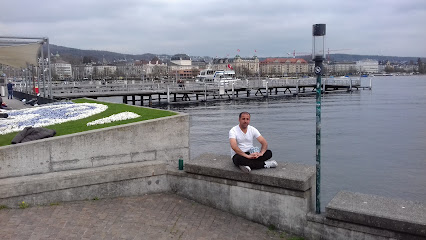
Centralhof Monument
Explore the Centralhof Monument in Zurich, a historical landmark that reflects the city's vibrant culture and rich heritage.
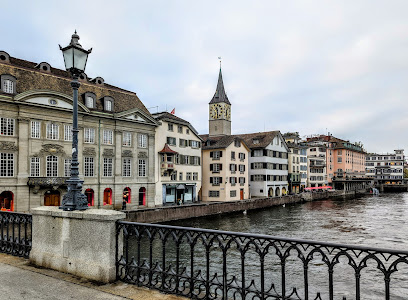
Ulrich Zwingli Monument
Explore the Ulrich Zwingli Monument in Zurich, a stunning tribute to the Reformation leader surrounded by picturesque views of the Limmat River.

David Brunnen
Explore David Brunnen, a historical gem in Zürich, where history meets serene beauty amidst the vibrant city life.
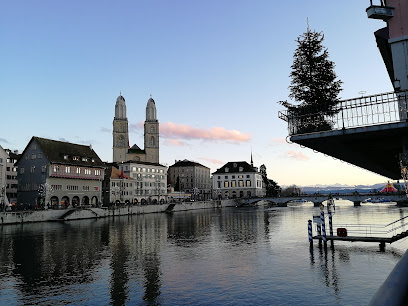
Lindenhof point d'eau
Experience the serene beauty of Lindenhof Point d'Eau, a tranquil lakeside escape in Zürich perfect for relaxation and stunning views.

Münzplatz
Explore the picturesque Münzplatz in Zürich, a serene square featuring a beautiful rose-adorned fountain and surrounded by historic architecture.

Niederdorfstrasse
Experience the vibrant atmosphere of Niederdorfstrasse in Zurich, where history meets modern culture through shopping, dining, and entertainment.
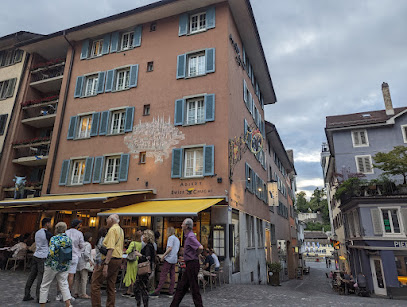
Brunnen am Zentralhof
Explore the serene beauty of Brunnen am Zentralhof, a tranquil fountain in the heart of Zürich, perfect for relaxation and cultural immersion.

Essential places to dine
Zeughauskeller
Discover authentic Swiss cuisine at Zeughauskeller, where history meets flavor in the heart of Zürich.

Swiss Chuchi Restaurant
Savor the essence of Switzerland at Swiss Chuchi Restaurant with traditional fondue and authentic local dishes in a cozy setting.

Cantinetta Antinori
Experience authentic Italian cuisine at Cantinetta Antinori in Zürich – where every meal is a celebration of flavor and tradition.

La Pasta
Experience authentic Italian cuisine at La Pasta in Zürich's vibrant Niederdorf district - where flavor meets tradition.

Brasserie Lipp
Experience authentic French cuisine at Brasserie Lipp in Zurich - where bistro charm meets culinary excellence.
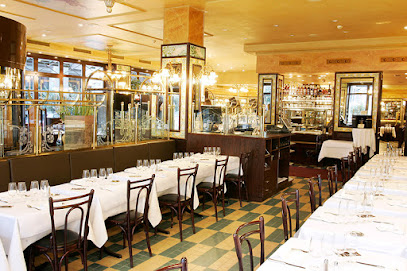
Mère Catherine
Experience exquisite French cuisine at Mère Catherine, Zurich's charming restaurant offering a cozy ambiance and exceptional service.

Ristorante Bianchi
Discover Ristorante Bianchi: where fine Italian dining meets fresh seafood along Zurich's beautiful Limmat River.

Oepfelchammer
Discover authentic Swiss cuisine at Oepfelchammer in Zürich - where tradition meets culinary excellence.

Restaurant Lumière
Experience exquisite French cuisine at Restaurant Lumière in Zürich – where culinary artistry meets elegant dining.

Toscano
Experience authentic Italian cuisine at Ristorante Toscano in Zürich – where every meal is a celebration of flavor and tradition.

Markets, malls and hidden boutiques
Teddy's Souvenir Shop AG
Discover unique Swiss souvenirs at Teddy's Souvenir Shop in Zürich, where delightful gifts and a cozy atmosphere await every visitor.

Schweizer Heimatwerk
Discover authentic Swiss souvenirs and handcrafted art at Schweizer Heimatwerk in the heart of Zürich, a haven for culture and craftsmanship.
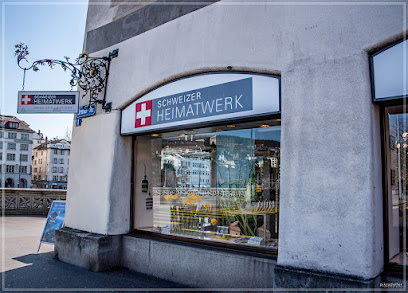
Flying Tiger Copenhagen
Explore the colorful and creative world of Flying Tiger Copenhagen in Zürich, where unique gifts and joyful surprises await every visitor.
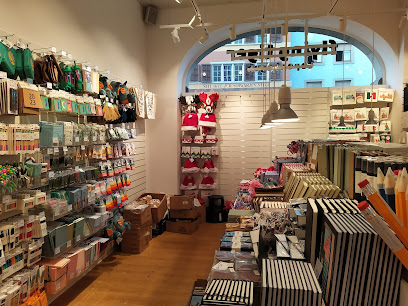
CIRCLE - The Sustainable Store
Explore CIRCLE - The Sustainable Store in Zürich for eco-friendly gifts, stylish clothing, and sustainable home goods that reflect your values.

Changemaker
Explore Changemaker in Zürich for a unique shopping experience with stylish gifts, clothing, cosmetics, and delightful teas.
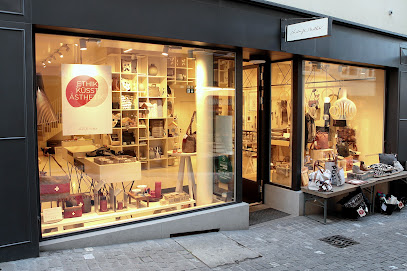
OREMUS Klosterladen Zürich
Discover OREMUS Klosterladen in Zürich: A unique gift shop offering Christian books, organic foods, and gourmet groceries amidst a serene atmosphere.

THE APARTMENT STORE
Explore unique fashion and accessories at The Apartment Store, a premier boutique in the heart of Zürich, where style meets charm.

diallo the store
Explore Diallo the Store in Zürich for an eclectic mix of fashion, vintage gems, and a taste of local culture.

New City Shop - Zurich Niderdorf
Discover an eclectic mix of local groceries, cannabis products, and unique souvenirs at New City Shop in Zurich Niderdorf.

Schipfe 51-jacksonpictures
Discover unique gifts and local art at Schipfe 51, an enchanting gift shop and gallery in the heart of Zürich, where creativity thrives.

Essential bars & hidden hideouts
Jules Verne Panoramabar
Experience fine cocktails and breathtaking views at the Jules Verne Panoramabar, a historical gem in the heart of Zürich.

Oliver Twist
Experience British and Irish hospitality at Oliver Twist in Zurich, where delicious food, vibrant sports, and a welcoming atmosphere await.

Old Crow
Discover Old Crow, Zürich’s premier cocktail bar, where vibrant ambiance meets expertly crafted drinks for an unforgettable nightlife experience.
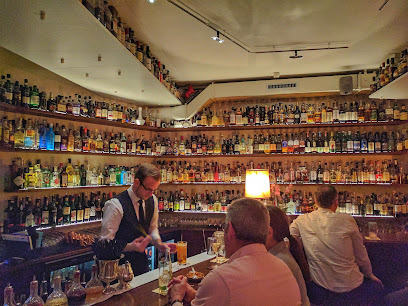
Widder Bar
Experience sophistication at Widder Bar in Zürich, where expertly crafted cocktails and an elegant atmosphere await you.

Old Fashion Bar
Discover the vibrant nightlife and exquisite cocktails at Old Fashion Bar, a premier bar and dance club in the heart of Zürich.

Le Raymond Bar
Experience the charm of Zürich at Le Raymond Bar, where exquisite cocktails meet a cozy garden ambiance for a perfect evening out.

BarMünster
Discover BarMünster in Zurich, where expertly crafted cocktails meet a vibrant atmosphere for an unforgettable nightlife experience.
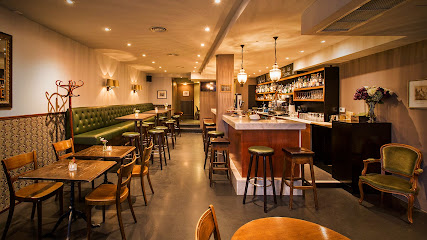
Wüste Bar
Discover the vibrant nightlife of Zürich at Wüste Bar, where creative cocktails and a lively atmosphere await every visitor.

Rössli Bar
Experience the vibrant atmosphere and delightful drinks at Rössli Bar, a must-visit destination in Zürich for tourists seeking local charm.
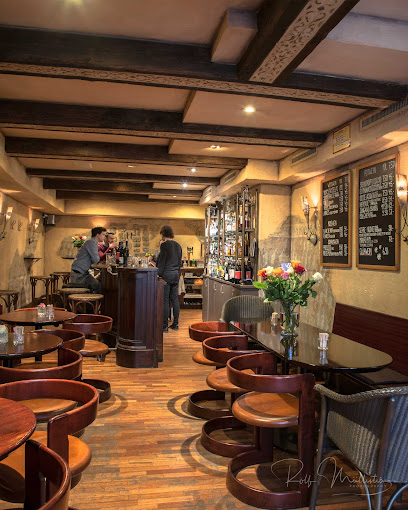
Altstadt Bar
Discover the lively Altstadt Bar in Zürich, where local charm meets vibrant nightlife and exquisite drinks await you.
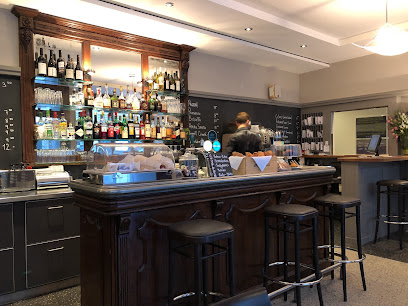
Local Phrases
-
- HelloGrüezi
[gru-e-tsi] - GoodbyeUf Widerluege
[oof vee-der-loo-geh] - YesJa
[yah] - NoNei
[nye] - Please/You're welcomeBitte
[bit-te] - Thank youMerci vilmal
[mehr-see feel-mal] - Excuse me/SorryEntschuldigung
[ent-shool-dee-goong] - How are you?Wie goots?
[vee gohts] - Fine. And you?Guet. Und dir?
[gweet. oont deer] - Do you speak English?Redsch Du Englisch?
[redsh doo eng-leesh] - I don't understandIch verstoh nöd
[eekh fer-shtoh nerd]
- HelloGrüezi
-
- I'd like to see the menu, pleaseIch möcht gern d'Menu aluege, bitte
[eekh merkht gehrn deh-menoo ah-loo-geh, bit-te] - I don't eat meatIch ässe kei Fleisch
[eekh ess-eh kye fly-sh] - Cheers!Proscht!
[prosht] - I would like to pay, pleaseIch möcht bitte zahle
[eekh merkht bit-te zah-leh]
- I'd like to see the menu, pleaseIch möcht gern d'Menu aluege, bitte
-
- Help!Hüüf!
[hewf] - Go away!Gang weg!
[gahng vehg] - Call the Police!Rüef d'Polizei!
[roo-ehf dee-poh-lee-tsai] - Call a doctor!Rüef en Dokter!
[roo-ehf ehn dohk-ter] - I'm lostIch ha mi verlore
[eekh hah mee fair-loh-reh] - I'm illIch bi chrank
[eekh bee khrahnk]
- Help!Hüüf!
-
- I'd like to buy...Ich möcht...
[eekh merkht] - I'm just lookingIch luege nume
[eekh loo-geh noo-meh] - How much is it?Was chostet das?
[vahs koh-stet dahs] - That's too expensiveDas isch z' teuer
[dahs ish tsoo toy-er] - Can you lower the price?Chasch du de Pris reduziere?
[khash doo deh prees reh-doo-tsee-eh-reh]
- I'd like to buy...Ich möcht...
-
- What time is it?Wieviu isch's?
[vee-foo ish] - It's one o'clockEis Uhr
[ice oohr] - Half past (10)Halb (10)
[halb] - MorningMorge
[mor-geh] - AfternoonNamitag
[nah-mee-tahg] - EveningAbig
[ah-beek] - YesterdayGestere
[geh-shteh-reh] - TodayHüt
[hoot] - TomorrowMorn
[morn] - 1Eis
[ice] - 2Zwei
[tsvai] - 3Drei
[dry] - 4Vier
[feer] - 5Fünf
[foonf] - 6Sechs
[zeks] - 7Siebe
[zee-beh] - 8Acht
[ahkt] - 9Nün
[noon] - 10Zäh
[tsah]
- What time is it?Wieviu isch's?
-
- Where's a/the...?Wo isch en/a...?
[voh ish ehn/a] - What's the address?Was isch d'Adresse?
[vahs ish dahd-res-seh] - Can you show me (on the map)?Chasch mir das zeige (uf em Plan)?
[khash meer dahs tsigh-eh (oof em plahn)] - When's the next (bus)?Wänn fahrt de nächscht (Bus)?
[vann fahrt deh nerkhst (boos)] - A ticket (to ....)E Billett (nach ....)
[eh billyet (nahkh)]
- Where's a/the...?Wo isch en/a...?
History of Altstadt
-
The Altstadt, or Old Town, of Zurich is the historical heart of the city, with its origins tracing back to the Roman period. The settlement of 'Turicum' was established around 15 BC, when the Romans built a customs post along the Limmat River. This strategic location facilitated trade and commerce, laying the groundwork for what would become Zurich.
-
During the Middle Ages, Zurich flourished as a free imperial city. The construction of the Grossmünster church in the 12th century marked a significant architectural achievement and became a symbol of the city. The Altstadt developed rapidly, characterized by narrow streets and medieval buildings, many of which still stand today, showcasing the city’s rich history.
-
The Protestant Reformation in the 16th century had a profound effect on Zurich and the Altstadt. Led by Huldrych Zwingli, Zurich became a center for Reformation thought, leading to the transformation of churches, including the conversion of the Grossmünster into a Protestant place of worship. This movement also influenced the cultural and social landscape of the city.
-
The 19th century brought significant changes to Zurich with the Industrial Revolution. While the Altstadt retained its historical charm, the city expanded rapidly with new industries and infrastructure. The establishment of the Swiss Federal Railways in 1847 connected Zurich to other major cities, further enhancing its role as a commercial hub in Switzerland.
-
The Altstadt experienced a cultural renaissance in the early 20th century, marked by the establishment of numerous art galleries, theaters, and cultural institutions. The city became a center for intellectual and artistic movements, attracting figures such as James Joyce and Vladimir Nabokov. The preservation of the Altstadt's historical buildings during this period reflects the city's commitment to maintaining its cultural heritage.
-
Today, the Altstadt is a vibrant blend of history and modernity, attracting millions of tourists annually. Its well-preserved medieval architecture, including the Fraumünster church with its famous Chagall windows, coexists with contemporary cafes, shops, and cultural venues. The Altstadt's role as a cultural and historical landmark continues to be an integral part of Zurich's identity.
Altstadt Essentials
-
Altstadt, or Zurich's Old Town, is easily accessible from other neighborhoods in Zurich. From Zurich Hauptbahnhof (the main train station), you can walk to Altstadt in about 10 minutes. Tram lines 4, 6, 10, and 15 also connect to various points in Altstadt. If coming from Zurich Airport, take the S-Bahn (S2 or S16) to Hauptbahnhof, which takes around 10-15 minutes.
-
Altstadt is compact and best explored on foot. The area is pedestrian-friendly, with many narrow streets and historical sites within walking distance. For further distances, public transport options include trams and buses with frequent services. Bicycles can be rented from local providers, and there are designated cycling paths throughout the area.
-
Altstadt is generally safe for tourists, but it is wise to remain vigilant, especially in crowded areas. Pickpocketing can occur in busy tourist spots, such as along the Limmat river or near popular attractions. Avoid poorly lit alleys at night and stay aware of your belongings.
-
In case of an emergency, dial 112 for police, fire, or medical assistance. Hospitals and clinics are available in Zurich, with the nearest emergency room located at the University Hospital Zurich. It's advisable to have travel insurance that covers health emergencies.
-
Fashion: Do wear comfortable walking shoes, as you'll be exploring on foot. Don't wear overly casual or revealing clothing, especially when visiting places of worship. Religion: Do respect local customs; cover your shoulders and knees when visiting churches. Public Transport: Do validate your ticket before boarding. Don't speak loudly or eat on trams or buses. Greetings: Do greet locals with 'Grüezi' (hello) and a smile. Don’t forget to say 'Danke' (thank you). Eating & Drinking: Do try local specialties like Zürcher Geschnetzeltes. Don't waste food; it’s considered disrespectful.
-
To experience Altstadt like a local, visit the charming cafes and bakeries that are tucked away in narrow streets. Try to attend local events or markets for authentic experiences. Engage in conversations with local shopkeepers; they often have fascinating stories about the neighborhood's history. For a unique perspective, consider taking a guided walking tour to learn more about the hidden gems and lesser-known stories of Altstadt.
-
Swiss culture values punctuality, so always aim to be on time for any appointments or gatherings. When dining, it is customary to keep your hands on the table but not your elbows. Tipping is appreciated but not mandatory; rounding up the bill or leaving small change is sufficient.
-
With its rich culinary scene, Altstadt offers a variety of local dishes. Don't miss out on trying fondue or raclette if you have the chance. For a quick bite, explore the street food scene, and be sure to sample traditional Swiss chocolate from local chocolatiers.
Nearby Cities to Altstadt
-
Things To Do in Lucerne
-
Things To Do in Basel
-
Things To Do in Gamprin
-
Things To Do in Eschen
-
Things To Do in Ruggell
-
Things To Do in Schaan
-
Things To Do in Mauren
-
Things To Do in Schellenberg
-
Things To Do in Vaduz
-
Things To Do in Balzers
-
Things To Do in Triesenberg
-
Things To Do in Freiburg
-
Things To Do in Dornbirn
-
Things To Do in Bregenz
-
Things To Do in Grindelwald













